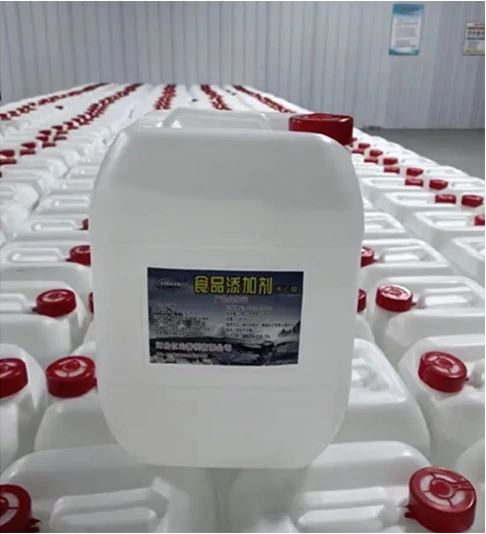
Nov . 05, 2024 20:17 Back to list
what is meant by glacial acetic acid
Understanding Glacial Acetic Acid
Glacial acetic acid is a pure form of acetic acid, characterized by its high purity, low water content, and distinctive properties. It is the anhydrous form of acetic acid, which means it does not contain any water. The term glacial refers to its ability to solidify and form ice-like crystals at temperatures below 16.6 degrees Celsius (62 degrees Fahrenheit). This article aims to explore the chemical properties, production methods, uses, and safety considerations of glacial acetic acid.
Chemical Properties
Glacial acetic acid has a chemical formula of C2H4O2, with a molecular weight of 60.05 g/mol. As a simple carboxylic acid, it is a colorless, hygroscopic liquid with a characteristic pungent odor. Its boiling point is around 117 degrees Celsius (243 degrees Fahrenheit), and it has a melting point of 16.6 degrees Celsius, which is why it can form solid crystals in cooler conditions. Glacial acetic acid is an essential chemical in organic chemistry, serving as an important solvent and reagent.
In terms of acidity, glacial acetic acid is classified as a weak acid with a pKa value of about 4.76. This means that in aqueous solutions, it does not fully dissociate, and only a portion of the acid molecules release protons, leading to a relatively mild acidic environment. However, in its concentrated form, glacial acetic acid can be corrosive and should be handled with caution.
Production Methods
Glacial acetic acid is primarily produced through two processes carbonylation of methanol and the oxidation of acetaldehyde. In the carbonylation process, methanol reacts with carbon monoxide in the presence of a catalyst to produce acetic acid. This method has gained popularity due to its efficiency and relatively low environmental impact. The oxidation of acetaldehyde involves the reaction of acetaldehyde with oxygen to form acetic acid, though this method is less common today.
The production of glacial acetic acid is a significant industrial process, with large-scale manufacturing facilities situated around the world. The intended use of glacial acetic acid often drives the selection of the production method, with considerations for cost, availability, and environmental impact playing a crucial role in decisions within the chemical industry.
Applications
what is meant by glacial acetic acid

Glacial acetic acid has diverse applications across various industries. One of its primary uses is as a solvent, particularly in the production of various chemical compounds, including vinyl acetate, which is an essential ingredient in adhesives and paints. Additionally, glacial acetic acid is utilized in making synthetic fibers such as rayon and acetate, which are important in textile manufacturing.
In the food industry, acetic acid is employed as a preservative and flavoring agent. It is a key component in vinegar, which is used in cooking and food preservation. The pharmaceutical industry also relies on glacial acetic acid for the synthesis of various medicinal compounds, while the agricultural sector uses it in the production of herbicides and pesticides.
Moreover, glacial acetic acid serves as a reagent in laboratories for chemical reactions, particularly in organic synthesis. Its ability to protonate certain substrates makes it a crucial component in various laboratory procedures.
Safety Considerations
While glacial acetic acid is a valuable chemical, it is also important to recognize its hazards. It is classified as a corrosive substance, capable of causing severe skin burns and eye damage upon direct contact. Inhalation of its vapors can lead to respiratory irritation and potential long-term effects on health. For this reason, personal protective equipment (PPE) such as gloves, goggles, and respirators should be worn when handling glacial acetic acid.
Proper storage and disposal methods must also be implemented to minimize environmental impact and ensure safety in workplaces where glacial acetic acid is present. It should be stored in tightly sealed containers made of compatible materials and kept in well-ventilated areas to prevent the accumulation of harmful vapors.
Conclusion
Glacial acetic acid is a fundamental chemical with a wide range of applications in various industries, including food, pharmaceuticals, and textiles. Its unique physical and chemical properties, coupled with its production methods and safety considerations, make it a critical substance in both industrial and laboratory settings. As with any chemical, understanding its nature and adhering to safety guidelines are essential to minimizing risks while harnessing its many benefits.
-
SmartAgri Solutions - Precision Farming&Soil Monitoring
NewsJul.13,2025
-
Industrial Solutions-Example Inc.|Smart Manufacturing&Energy Efficiency
NewsJul.13,2025
-
Food Grade Glacial Acetic Acid-Pure Quality|High-Purity Acetic Acid,Food-Grade Chemical
NewsJul.13,2025
-
Industrial Efficiency Solutions-NextGen Technologies|Advanced Automation&Data-Driven Analytics
NewsJul.12,2025
-
Smart Manufacturing Solutions-Example.com|Enhance Efficiency&Reduce Costs
NewsJul.12,2025
-
Food grade glacial acetic acid
NewsMar.07,2025
